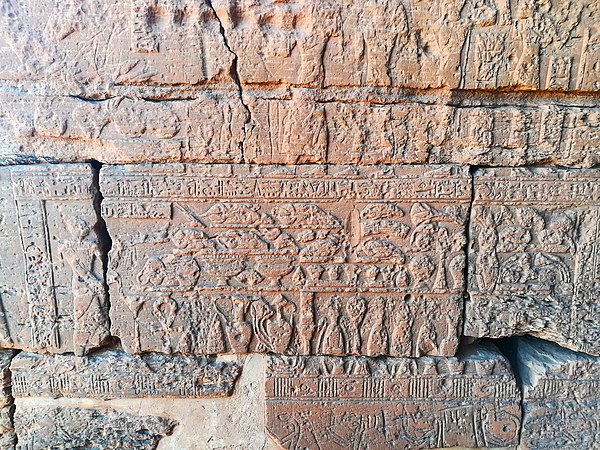Meroitic Script



Annotation
The Meroitic Script was used in the Kingdom of Kush beginning in the 3rd Century BCE, or the Meroitic Period, and had two forms, Meroitic Cursive and Meroitic hieroglyphs. There were 23 letters with four vowels in the Meroitic alphasyllabary (an alphabet where consonant/vowel units are written together).
Both forms are derived from Egyptian writing, with Meroitic Cursive stemming from Demotic Egyptian, a script, and Meroitic hieroglyphs coming from Egyptian hieroglyphs. Some scholars hypothesize the script may have also had influences from the Greek alphabet due to the differences between the Meroitic script and Egyptian hieroglyphs. Meroitic Cursive was used for the majority of extant texts. A British Egyptologist, Francis Llewellyn Griffith, first deciphered the script in 1909, but the language the script is written in is still not fully understood. However, the script is important as an early writing system in Africa.
Credits
"Meroitic," Wikimedia Commons, https://en.wikipedia.org/wiki/Meroitic_script#/media/File:Meroitic.png.